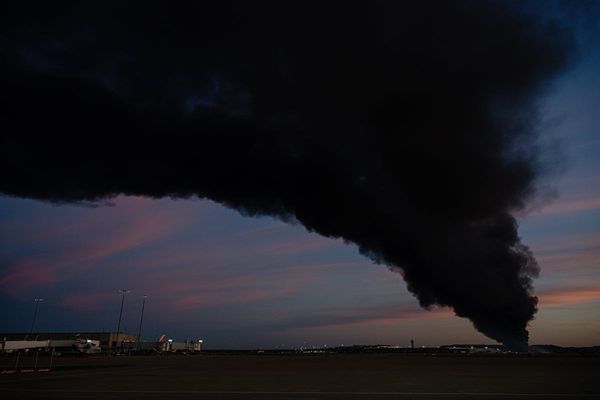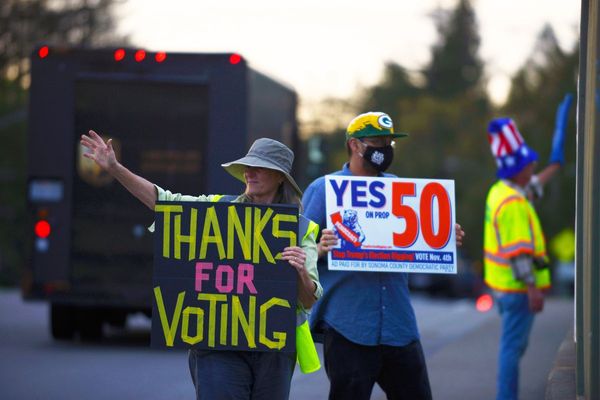Here is this week's Scotonomics, we hope you will enjoy. This week the newsletter comes from William Thomson (follow me on X/Twitter!)
To find out about our latest subscription offers, visit our subscribe page here.
The Our Seas campaign seeks to reintroduce the three-mile trawling and dredging exclusion zone along Scotland’s coast.
I have been to a few receptions at Holyrood, but a few weeks ago, standing in the queue to go through the metal detectors felt more like a trip abroad than a political reception. Fifty people in front slowly passed through the security barrier, leaving the cold behind them. With this turnout, maybe, I thought, the Our Seas alliance has a chance of achieving its aims.
Moving through to the members' lobby and resting next to those famous steps, I studied the crowd, counting a handful of MSPs among the 100 guests.
Our Seas is pushing for a return of the three-mile coastal exclusion zone, which was removed by Thatcher’s government in 1984. Until I spoke at an Our Seas event last year, I had no idea about the history or the impact of coastal exclusion zones.
Like many Scots, my connection to the sea occurs mainly on a Friday night at the chippy or on a rare sunny occasion on the beach at Musselburgh or Burntisland. As a country, we turned our back on the sea a long time ago, and considering that in Scotland, you are never more than 41 miles from the coast, this smacks of social, cultural, and economic ignorance. It never used to be like this in.
In 1889, a three-mile coastal exclusion zone was introduced in Scotland. Since the early 1870s, a novel vessel, the trawler, had become more common in Scotland’s waters. Local fishermen, still mainly using small nets near the coast, were noticing a decline in their catch, so it seemed reasonable to push trawling beyond a point where the more traditional forms of fishing took place.
For almost 100 years, the exclusion zone remained in place and became an invisible buffer between the old and the new. Traditional fishing, including diving for scallops and creel fishing, took place close to the shore. Industrial fishing methods, including trawling – which drags large nets near the seabed and dredging that rakes the seafloor – fished further out to sea.
It would be hard to find a harder way to make a living, but throughout the early 20th century, this separation helped coastal communities thrive. However, by the early 1970s, it was becoming clear that fishing stocks in Scotland were showing worrying signs of decline. No one was aware at the time, but the fishing catch had peaked in 1954. That year, 793,803 tonnes of fish were landed in the UK.
By 1982, when GA Mackay conducted one of the first economic reviews of the Scottish fishing industry, the UK catch had already slipped to 448,025 tonnes. In his report, Mackay noted: "There can be little doubt that the fishing industry ... has suffered substantial decline in recent years.” It was not just the tonnage that was falling but also the price. “Fishermen's earnings have fallen substantially in real terms,” warned Mackay.
Just over 8500 fishermen were plying their trade at the time. Scotland accounted for 60% of UK fish landings, with Aberdeen Peterhead and Fraserburgh landing over a third of the total UK catch by value. Small family fishing boats made up more than 50% of the Scottish fishing fleet.
By the early 80s, as we all know, Scotland had entered a period of industrial decline, and fishing, “one of the country's first 'traditional' industries with a commercial history of many centuries”, was searching for more than the "ad-hoc" support it had received from the UK Government.
To the fall in fishing stocks and prices, Mackay added the visits from EEC members' fishing fleets (the last "cod war" with Iceland had just ended) and the high price of fuel. A perfect storm. Mackay concluded: “Scottish fishermen are genuinely afraid of the consequences of a 'free for all.'"
And then, in 1984, the UK Government inexplicably removed the three-mile inshore limit. Today, according to Our Seas, bottom-trawling is allowed in 90% of our coastal seas, dredging in 95%. By 2020, Scotland had just over 4000 fishermen who landed 287,000 tonnes of fish. Almost a 50% fall from when Mackay filled his report. But the damage on the sea floor was even worse than the wreckage above.
Scotland’s seabed habitats have been reduced to a fraction of their original extent. Oyster beds that once blanketed our Firths have been harvested to the point of local extinction; seagrass meadows now survive only in a few scattered coastal pockets; and maerl beds, once rich with marine life, have been dredged into mere gravel. Removing inshore fish populations and damaging their breeding grounds has disrupted the entire marine ecosystem.
The decision to create that "free for all" was typical market-driven-madness from Thatcher. Let the market decide who and what survives. Resilience sold under the guise of market efficiency.
As is increasingly the case, we must seek the wisdom of our distant relatives. What worried those sea stewards in 1899 has come to pass. A sustainable resource and a delicate ecosystem have been wrecked. The exclusion zone must be reintroduced.
Our Seas alliance is calling for “the re-establishment of a modern, coastal limit on bottom-towed fisheries to restrict damaging fishing from the coastal zones of our seas”. They maintain that “If implemented fairly, this transition would allow our inshore marine environment to recover. It would provide a nursery for fish populations, sustainable jobs for sustainable fishermen, vibrant seas for coastal tourism, and a resilient future for Scotland.”
A few days before the reception at Holyrood, I met an MSP to discuss what a resilient economy would look like and to give them some examples of policies that they should support. Number one on my list was the Our Seas campaign.
A resilient economy supports local, sustainable, and seasonal food production and consumption. It creates meaningful jobs that consider stewardship a central part of the role. It rewards culturally significant jobs that have meaning. It promotes a connection to nature. It creates resilient communities by spreading wealth equally and fairly. It sees our land and our seas not only as a source of goods for the market but as tranquil places for reflection, sport, and leisure. And crucially, as part of a fragile earth system. In this specific instance, it is an economy and a society that opens itself to the sea. By creating more resilient people and places, we create a more resilient planet.
The Our Seas campaign has built up a huge amount of momentum, and a final push this year would encourage all of our political parties to include calls for a return of the exclusion zone in their manifestos for 2026. To support a resilient Scotland, you can sign up for the campaign by visiting www.ourseas.scot.







